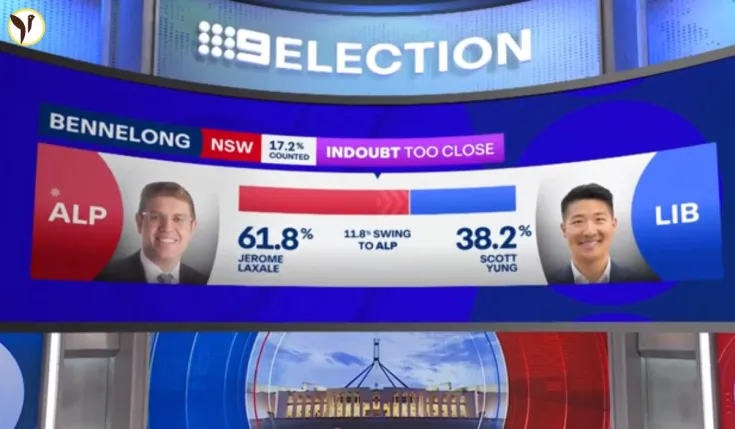Bennelong: A Battleground Electorate
The 2025 Australian federal election saw Bennelong, a traditionally safe Liberal seat, become a nail-biting contest. With a razor-thin margin of just 0.04 percent favoring Liberal challenger Scott Yung over Labor incumbent Jerome Laxale, Bennelong held the nation's attention on election night. This article delves into the key aspects that made this Sydney electorate a focal point of the election, exploring the campaign strategies, major issues, and the unique dynamics at play.
The Bennelong Battle: Yung vs. Laxale
Scott Yung, the Liberal candidate, campaigned heavily within the significant Chinese community in Bennelong, utilizing both Mandarin and Cantonese to connect with voters. He received support from high-profile figures like former Prime Minister Tony Abbott, who dismissed negative reports about Yung's campaign as "beltway bubble stuff." Controversy surrounded Yung's failure to fully disclose campaign funding in a previous state election, a point raised by his opponents.
Jerome Laxale, the Labor incumbent, faced a challenging campaign. News reports regarding homophobic comments made by his father at a pre-polling station added complexity to his efforts. Laxale himself acknowledged the potential damage, emphasizing his family's apologies and their focus on moving forward. Despite facing an uphill battle, Laxale maintained a positive outlook, emphasizing their efforts to connect with voters on key issues.
- Key Issues: Cost of living and housing were paramount concerns raised by voters in Bennelong, echoing sentiments across much of the country.
- Allegations against Yung: The controversy surrounding undisclosed campaign funding from the 2019 state election remained a point of contention throughout the federal election campaign.
- Laxale's Family Controversy: The incident involving Laxale's father's comments created a significant challenge in the final stretch of the election.
Beyond Bennelong: A Look at Other Sydney Electorates
The 2025 election wasn't just about Bennelong. Other Sydney electorates provided fascinating insights into the political landscape. In Wentworth, heightened aggression among some campaign volunteers was reported. Liberal candidate Ro Knox noted increased aggression, specifically mentioning the "teal" independents, although she praised Allegra Spender's conduct.
South-west Sydney, traditionally a Labor stronghold, saw strong independent campaigns. Concerns over the war in Gaza, cost of living, and a perceived lack of responsiveness from the Labor party fueled independent challenges. In Fowler, Dai Le, who had won in a stunning upset in the previous election, faced another tight contest, highlighting the shift in voter sentiment in western Sydney.
- Wentworth: Witness to reported campaign aggression and contrasting campaign styles.
- South-West Sydney: Labor's dominance challenged by concerns over cost of living, the war in Gaza, and independent candidates who gained traction.
- Fowler: Dai Le's close re-election campaign, highlighting the continued political shifts in the area.
Conclusion: Bennelong and the Broader Picture
The Bennelong electorate's extraordinarily tight contest highlighted the shifting political landscape in Australia. While the seat has historically been a Liberal stronghold, the narrow margin underscores the growing influence of independent candidates and the concerns of voters regarding cost of living and other crucial local issues. The 2025 election in Bennelong, along with the results in other key electorates, served as a clear indication that Australian voters are increasingly willing to consider alternatives to traditional party politics. The election results, whatever they may be, highlight a nation grappling with complex issues and a changing political climate.






